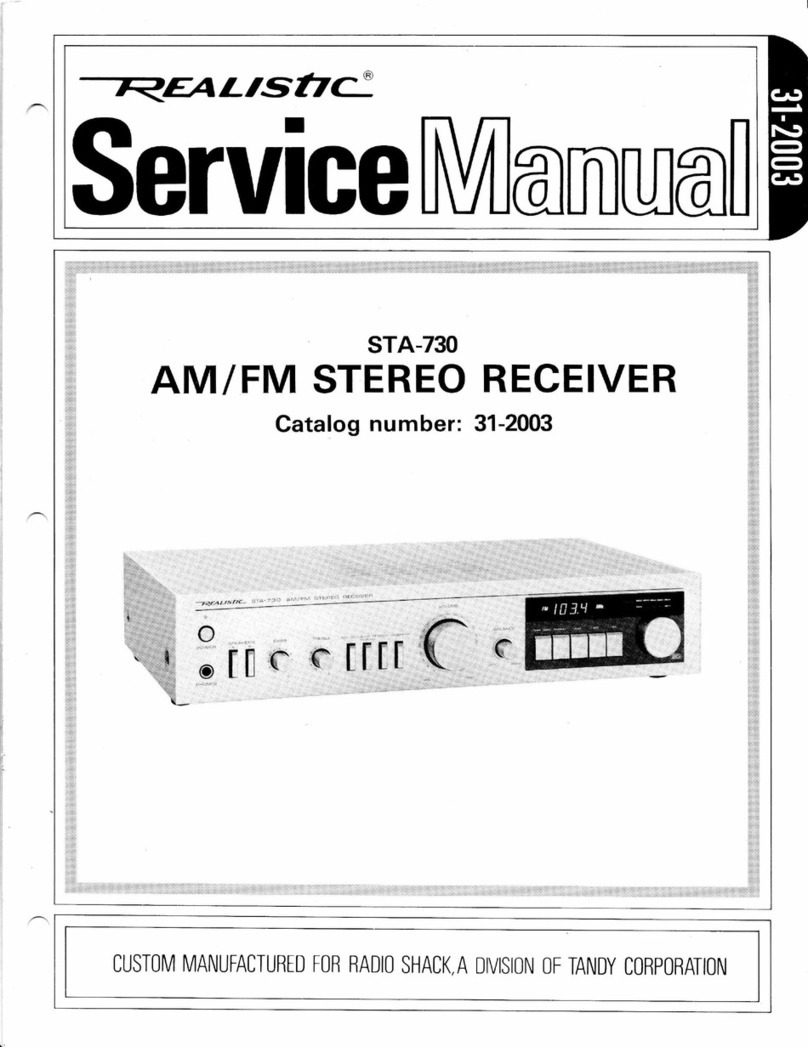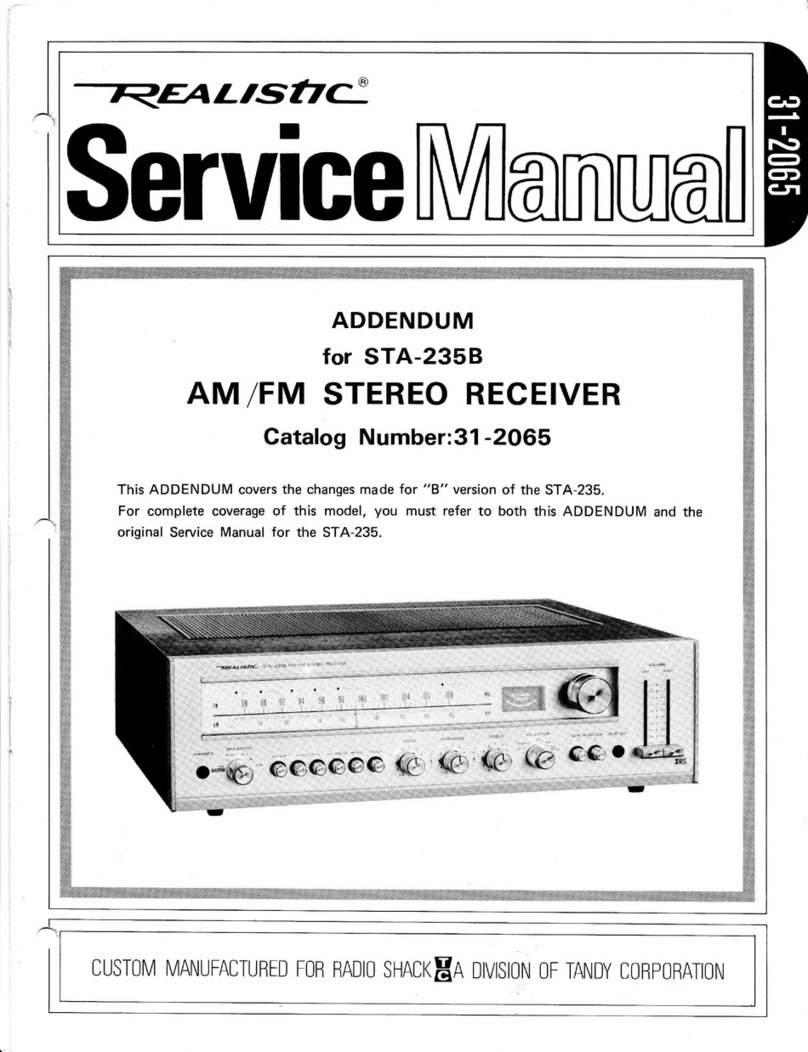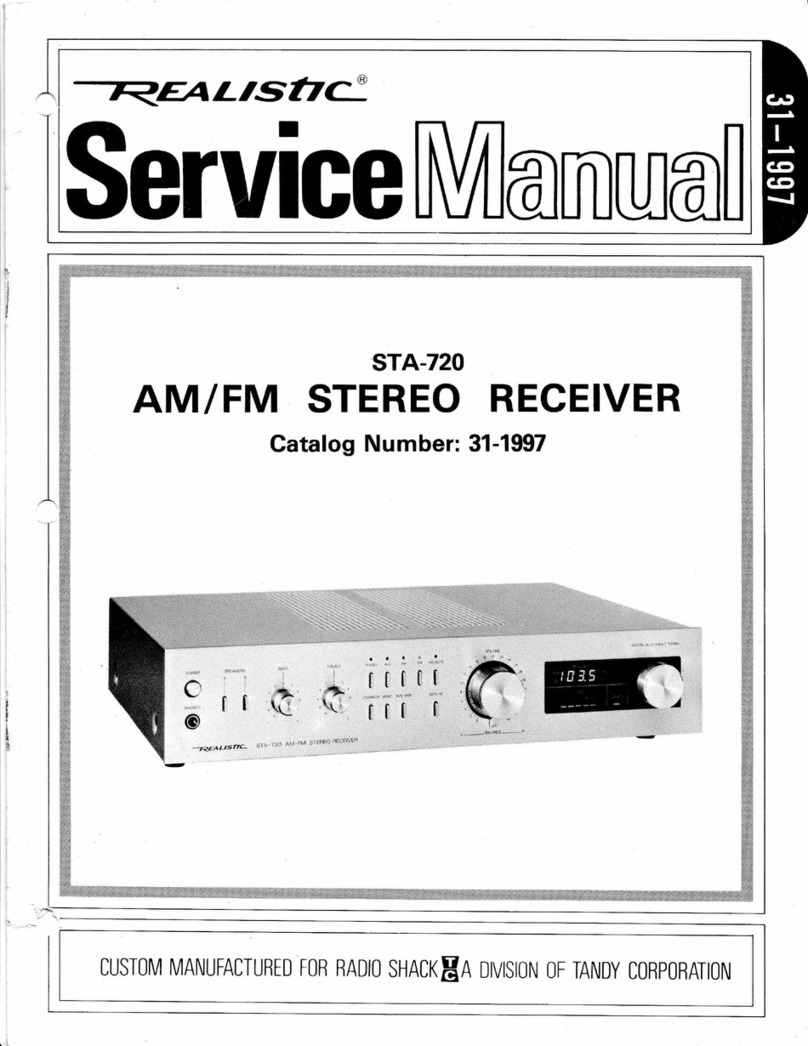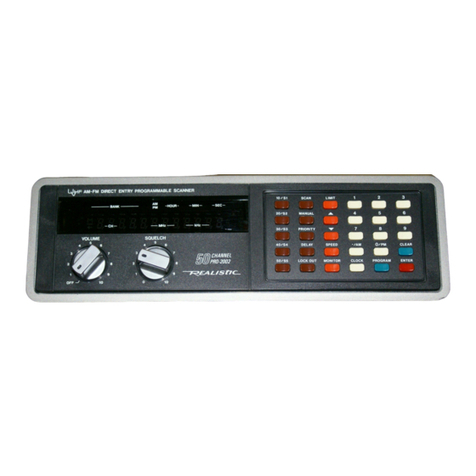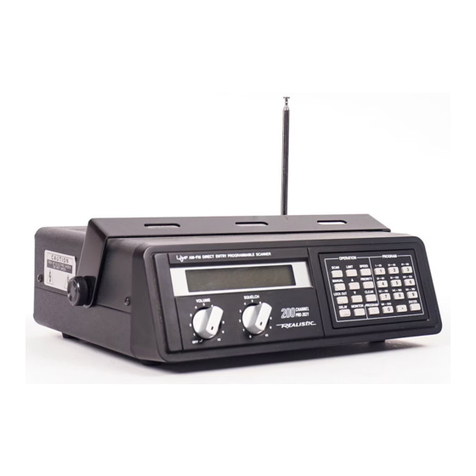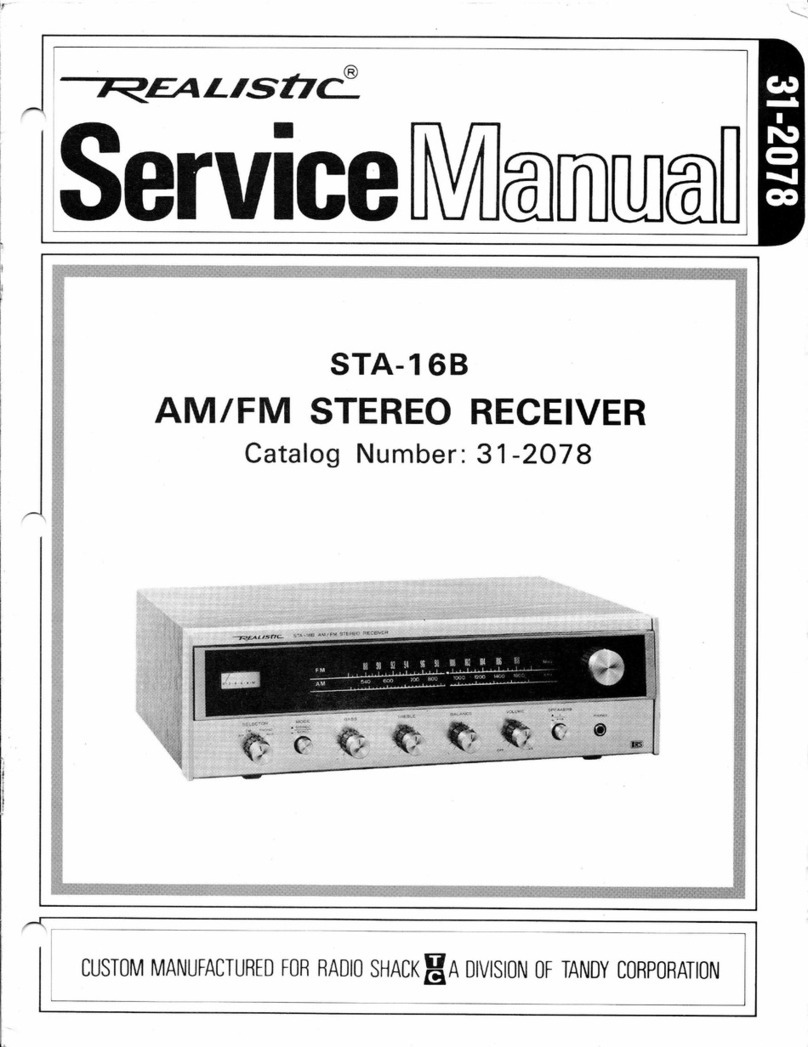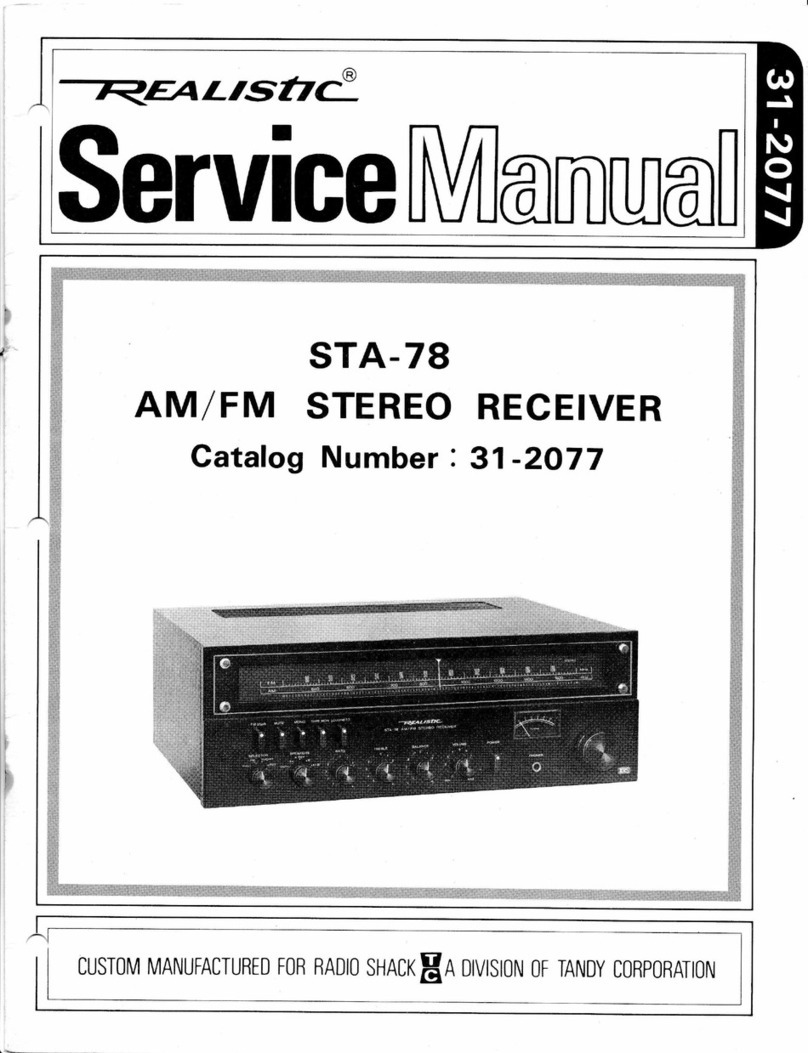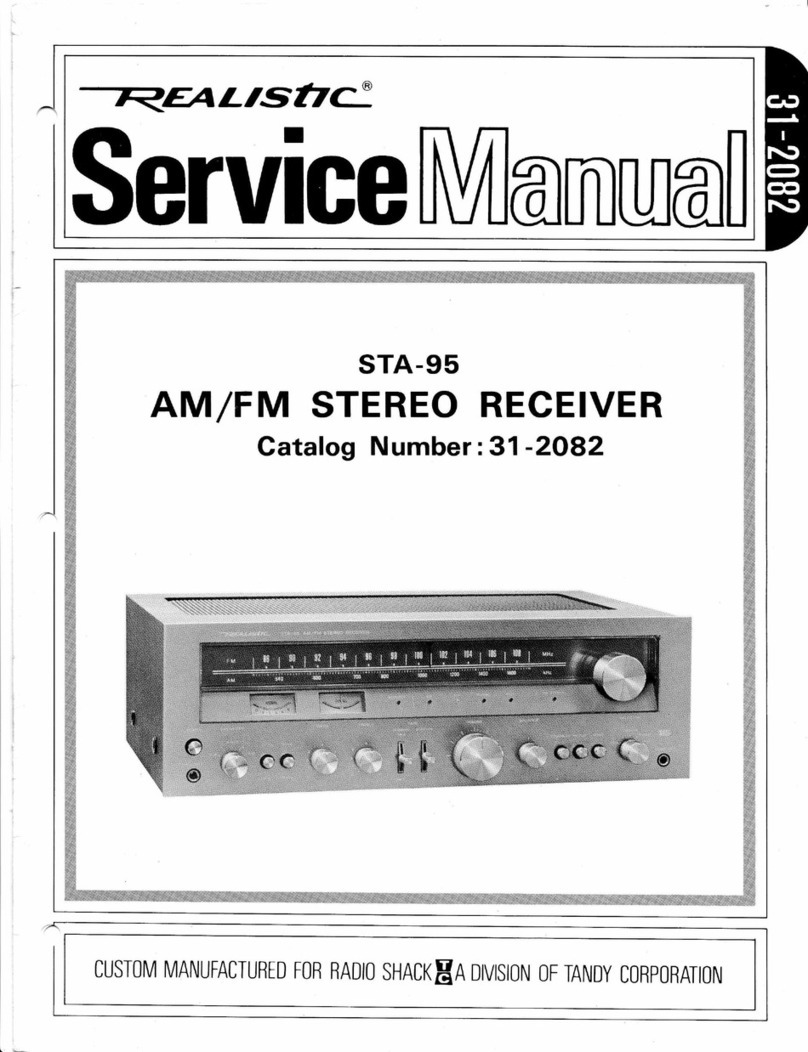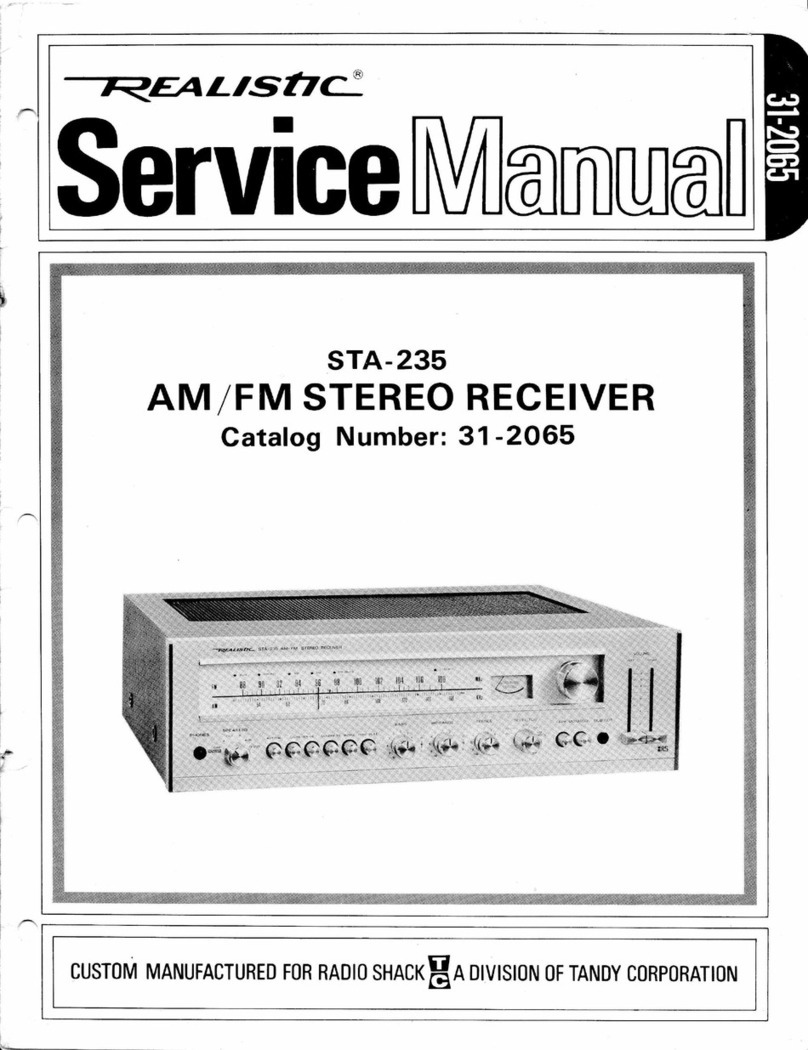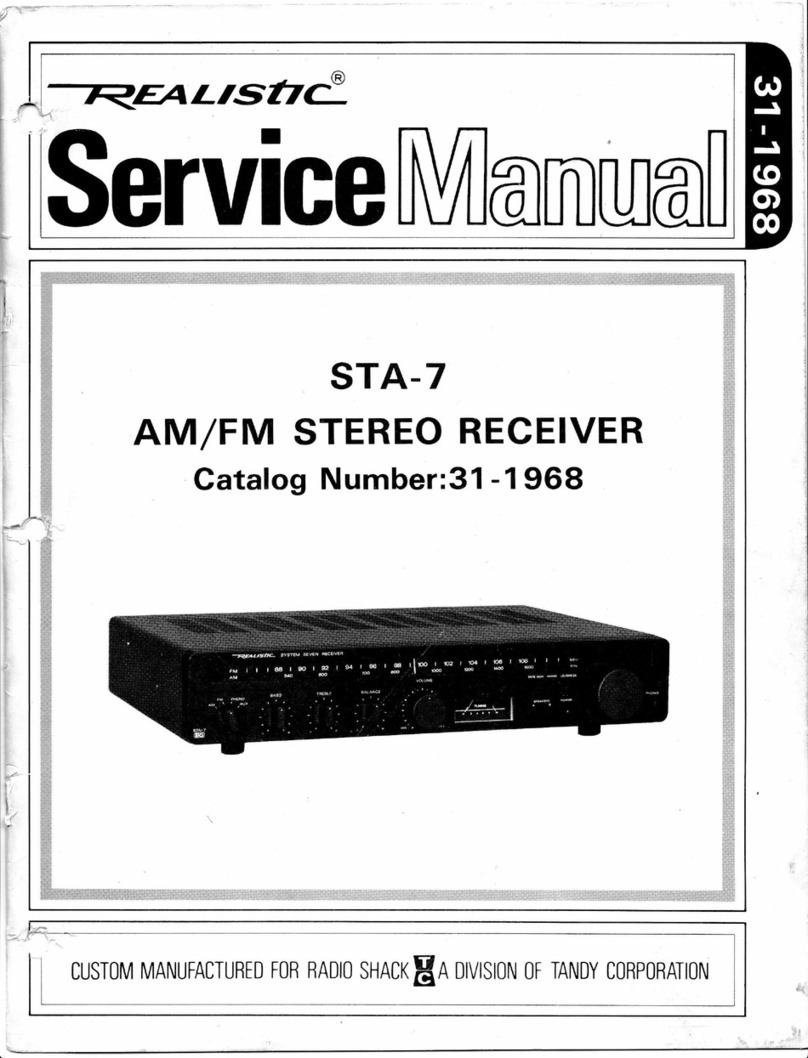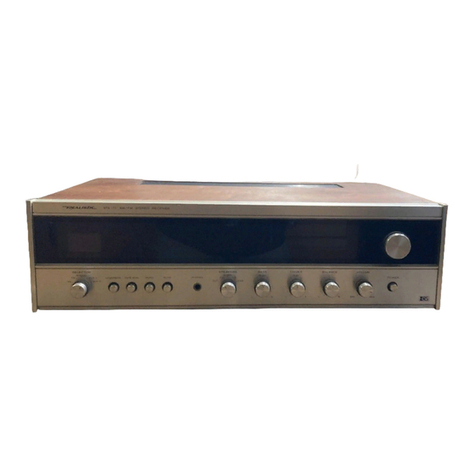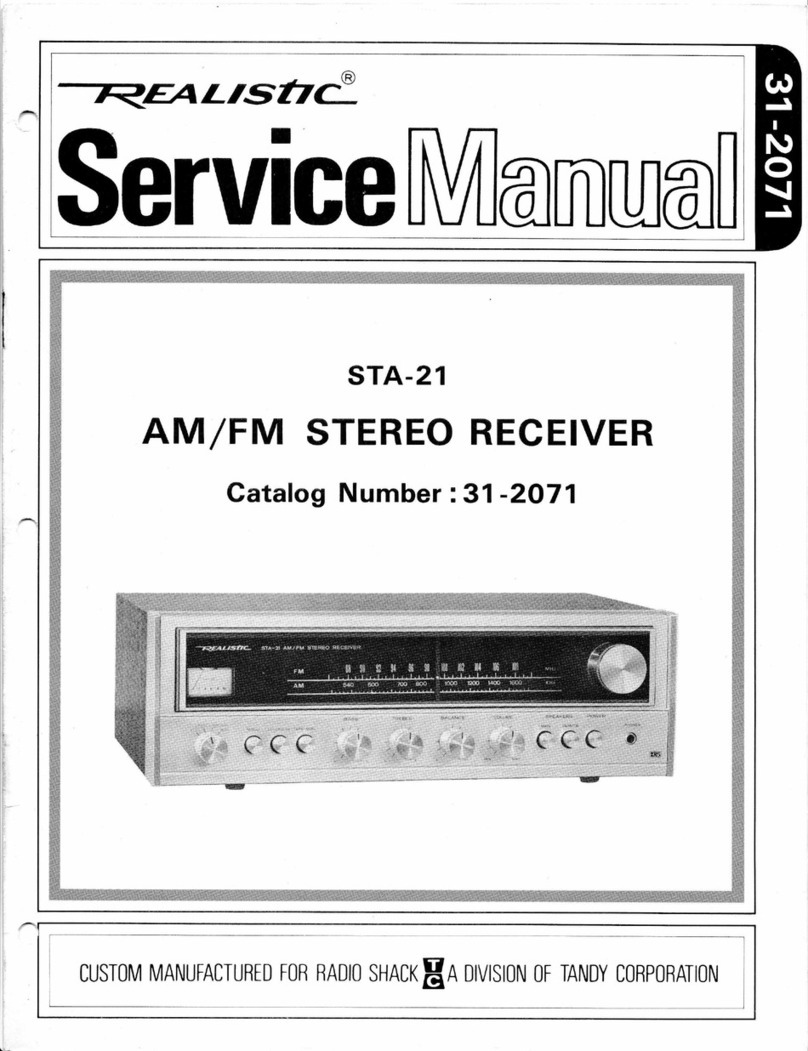
PAGE
ELECTRICAL PERFORMIANCE SPECIFICATIONS ,,,,.. 3-7
DISASSEMBLYINSTRUCTIONS. B-9
BLOCKDIAGRAM.. ...10
LEVEL DIAGRAM. ,.,..11
DIALSTRINGING DIAGRAM. ,,.,.,.11
CTRCU|TDESCRIPTION :..... .12-13
OPERATIONAL CHECK FOR CIRCUITS 14 - 26
ALIGNME NT I NSTRUCTIONS 27 -32
TROUBLESHOOTING... 33-35
TUNER AUDIO P.C.B, (TOP & BOTTOM VIEWS) 36 - 37
LEDP.C.B.(TOP&BOTTOMVIEWS). ..... .38
SPEAKERSWTTCH P.C.B. (TOP&BOTTOM VIEWS). .......39
DIAL POINTER P.C,B. (TOP & BOTTOM VIEWS) . . . ,39
WIRINGDIAGRAM ....40
EXPLODED VIEW 41 _- 42
ELECTRICALPARTSLIST. ....43-55
EXPLODED VIEW PARTS LIST . 56 -_ 57
TRANSISTOR LEAD IDENTIFICATION.. ...58
IC LEAD IDENTIFICATION & INTERNAL DIAGRAM. 59 - 62
SCHEMATIC DIAGRAM , .64- 65
PRODUCT,SAF'ETY NOrteE' ', ''",
,,,ManV.eiectric-al,and, rnech,anlcal" 'par.ts,,in ,this ihassii have specia|Ahaiaetefisties:,,:,f,heCe,e harActef',.;
r iiiiei,oitenlpiii1,unn,aiisld, ain6,.15e proiection,r61iqp6s6. by' them cannot necessarily be obtained
..'brVr,Using.iep'iacement, e:ompOnentsr, rated, toi:hi$her:,rvoltaggr,wattager,etc;, .Fle-pJater:nent,pails,thal::
, ,conipronents,,naving, sueS,,,isa,1u1s!,:6ie ioentitiea,bV er,,A ,!n the sche.matic diagram.,ahd,,the.nartii
list.
,..Beteieali+Oiaiing.,a,n17.of'tnese,ionrpoaenti.'reid:'16s parts list.i'n,this,ma"-u;l,,Careinjilfhi'tte ,
'.,sJnSiiiuta:rep'ljcrrnen,ttpiiii.,ihai.Ao noi:traie,,ifle'sarne,safety chaqacterlstics as specified in the
.)


